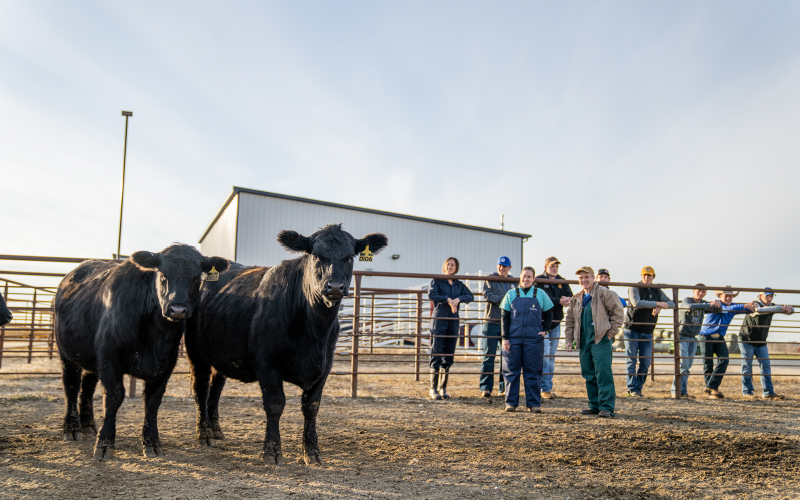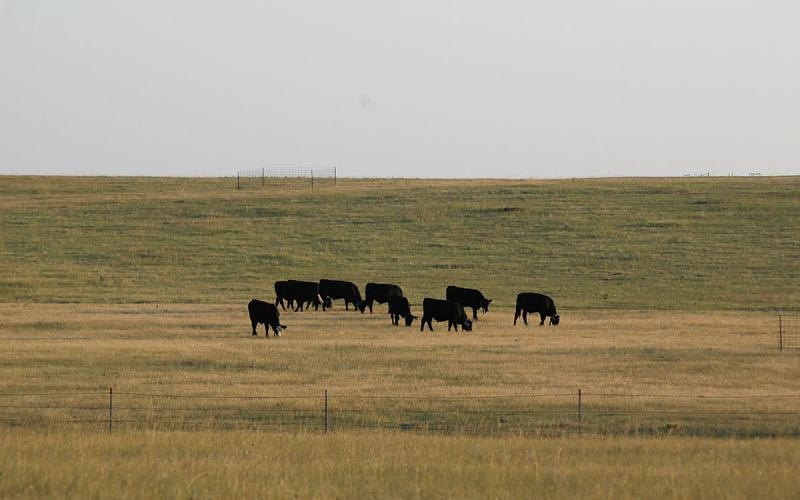
Originally written by Adele Harty, former SDSU Extension Cow/Calf Field Specialist.
The weather pattern this winter and looking forward to spring has been warmer and drier across South Dakota. With the dry conditions from last year carrying into this winter, pastures have been grazed shorter, and hay supplies are tight in many situations. This scenario can result in the perfect storm for challenges with grass tetany, and ranchers need to be proactive in mitigating risk. With warmer temperatures, cool-season grasses will green up quickly when precipitation comes. With the lack of dormant, standing forage in many pastures, cows will be selecting for the lush green grass, increasing the risk of grass tetany for cows in early lactation. Furthermore, increasing that risk are cool-season grasses, such as crested wheatgrass, Kentucky bluegrass and bromes that grow rapidly. Understanding risk factors and knowing how to mitigate risk are key.
What is Grass Tetany?
Grass tetany is a metabolic disorder associated with grazing lush, rapidly growing pastures, resulting in low concentrations of blood magnesium (Mg), which results in nerve impulse failure in animals. With adequate moisture and warm temperatures, grasses grow rapidly. Grass tetany isn’t normally seen until May, however, taking steps early to prevent it will be more effective in the long run. It is never too early to plan and ensure proper management practices are in place.
Understanding factors that influence the progression of grass tetany can help manage risk. These factors include:
- Low Mg coupled with high potassium (K) content of rapidly growing forages.
- High crude protein content of forages.
- Bad weather (storms, stress, etc.) that cause cattle to be “off feed” for 24 to 48 hours.
- Lactation decreases Mg and calcium (Ca) levels as they are transferred to the calf through milk.
- Various combinations of the above factors resulting in low blood Mg or Ca.
Older, lactating cows with calves younger than two months of age have the greatest susceptibility to tetany. Mature cows are less able to mobilize Mg from their bones to maintain blood Mg levels. Additionally, cows within two months of calving have higher requirements for Ca and Mg due to lactation. Steers, heifers, dry cows, cows with calves older than four months of age and bulls are less susceptible.
Management Considerations
Prevention is key to minimizing risks associated with lactating cows grazing lush pastures. Options for prevention include:
- Delay turn-out until plants are 4 to 6 inches tall.
- Provide a high-magnesium (Mg) supplement containing 8 to 12% Mg at 3 to 4 oz. daily intake starting two to three weeks prior to turnout. For a cooked molasses product with a recommended intake of approximately 1 pound per day, the guaranteed analysis for Mg should be approximately 4%. Read the label to ensure adequate Mg levels; know recommended intake and monitor consumption.
- Provide hay while cattle are grazing lush pastures; however, cattle are not likely to eat hay unless forced to. Dry forages can provide additional Mg and Ca.
- If the water source is a tank, soluble Mg salts can be added, such as magnesium acetate, magnesium chloride and magnesium sulfate (Epsom salts).
- A long-term approach is to incorporate more legumes into pasture mixes, as legumes have higher Mg and Ca than do immature grasses, resulting in a better balance across the pasture.
Symptoms and Treatment
Death from grass tetany can occur very rapidly, therefore symptoms may not be observed. Symptoms progress over 4 to 8 hours as follows: grazing away from the herd, irritability, muscle twitching in the flank, wide-eyed and staring, muscular incoordination, staggering, collapse, thrashing, head thrown back, coma and finally death. Affected animals should be handled calmly, because stress can cause sudden death.
Treatment options are available, but effectiveness depends on the clinical stage when it is administered. If treatment is started one or two hours after clinical signs develop, the results are usually a quick recovery. Treatment is not effective if delayed until the coma stage. Grass tetany can be treated with an intravenous dextrose-based commercial preparation of magnesium and calcium purchased from a local veterinarian.
Remember cattle are more susceptible to grass tetany in the spring with weather events increasing risk. Determine and implement prevention practices, monitor cattle for symptoms, and treat as soon as possible according to a protocol developed with your veterinarian.


